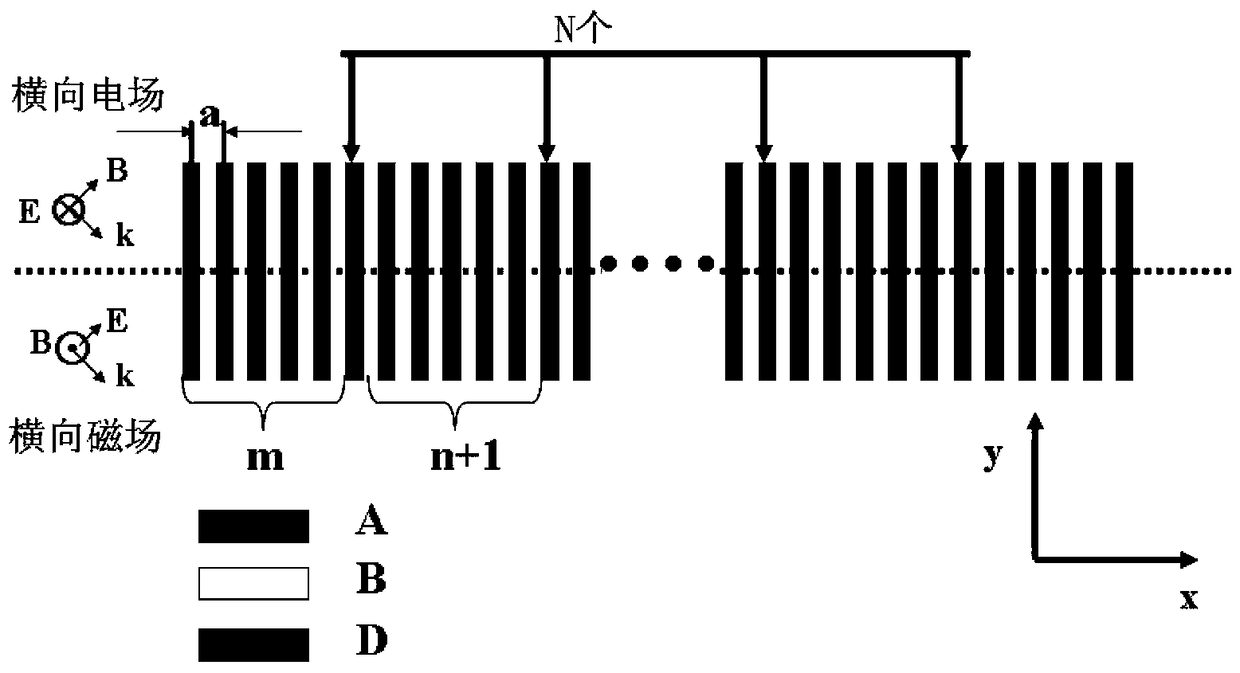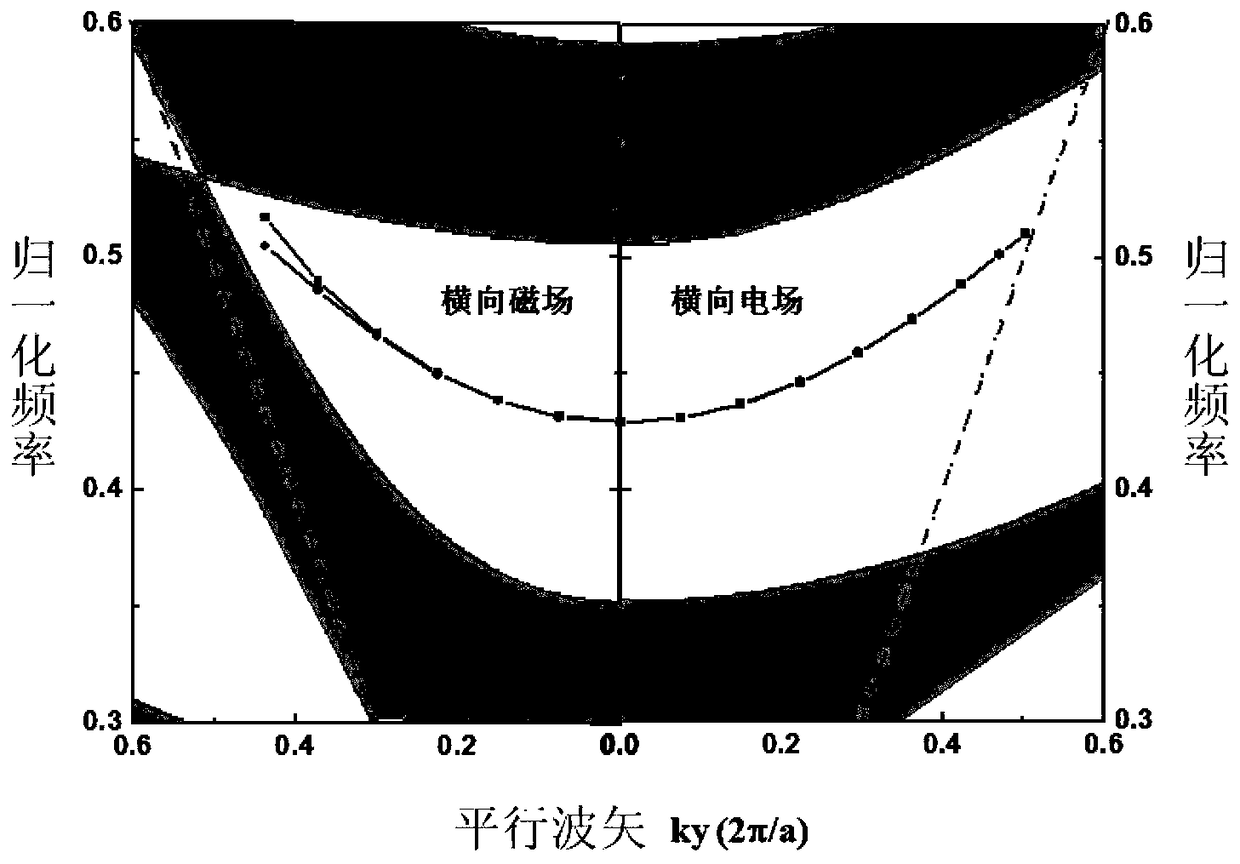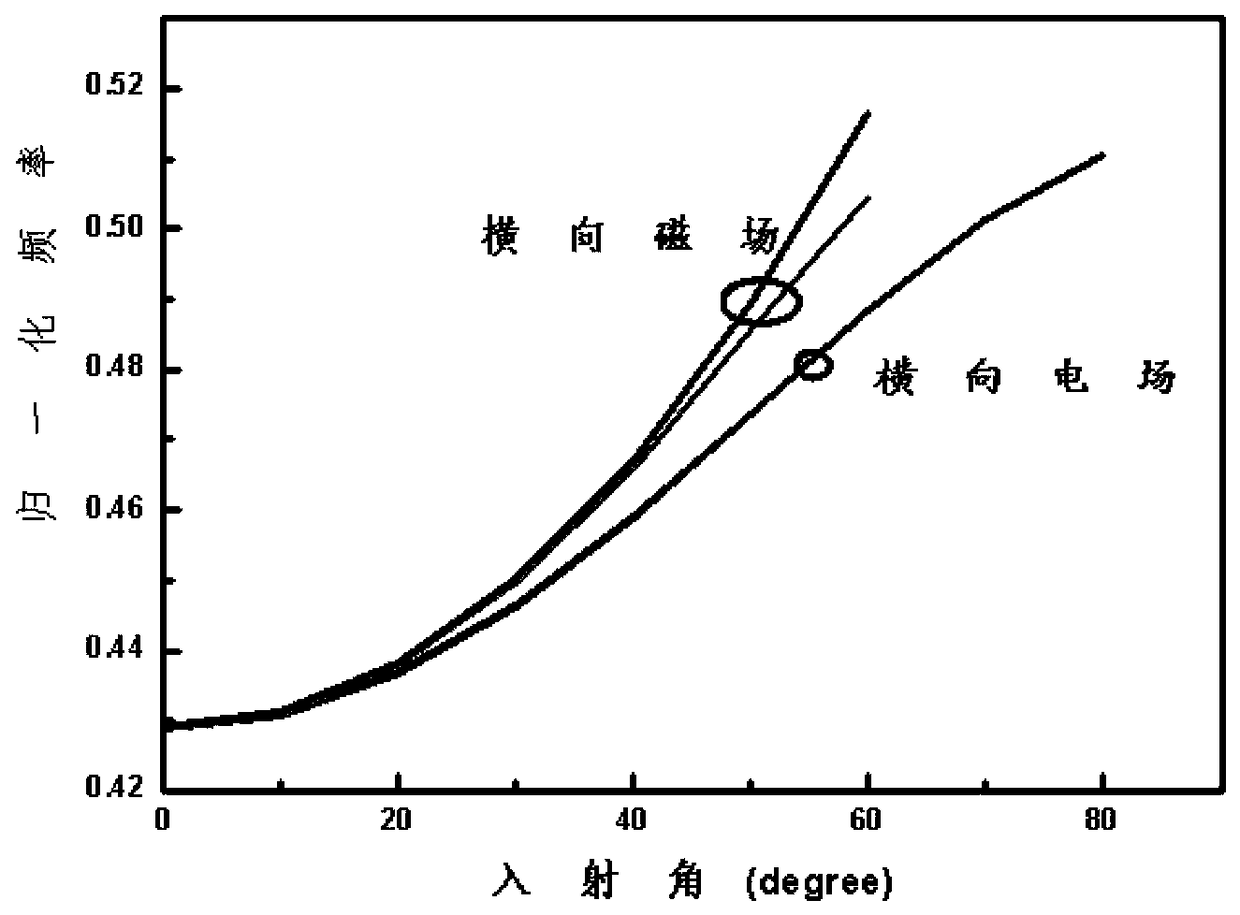A Design Method of Te/tm Mode Separator Based on Photonic Crystal Defect Band
A technology of photonic crystal and design method, applied in instruments, light guides, optics, etc., can solve the problems of difficult process, difficult to manufacture, and many polarization crosstalk, and achieve the effect of simple process and low cost
- Summary
- Abstract
- Description
- Claims
- Application Information
AI Technical Summary
Problems solved by technology
Method used
Image
Examples
Embodiment 1
[0025] To illustrate the design method of the TE / TM mode separator, we first illustrate our design process by taking a 1D photonic crystal as an example. like figure 1 As shown, this 1D photonic crystal is constructed of dielectric materials with dielectric constants 1 (air) and 13 (eg silicon), both of which have a normalized thickness of 0.5. In which, N defect layers are periodically introduced to form a coupled microcavity waveguide structure. The dielectric constant of the defect layers can be changed between 1 and 13, and the normalized thickness can also be changed between 0.1 and 0.9.
[0026] Here we first choose a case for detailed discussion. For example, we choose the dielectric constant of the defect layer to be 6, its normalized thickness is 0.5, and the number of defect layers is N=10. From the previous calculations, these defect states will form defect bands in the band gap of the photonic crystal. In order to show the nature of the defect band in more detail...
Embodiment 2
[0028] To illustrate the effect of the parameters of the defect layer on the TE / TM mode separator in more detail, we discuss the properties of different defect layers in detail: when the dielectric constant of the defect layer is 1, similar to the previous discussion process, this coupling can be obtained The minimum splitting angle of the TE / TM defect band of the microcavity waveguide is 17.4. When the dielectric constant of the defect layer is 13, the minimum splitting angle of the TE / TM defect band of this coupled microcavity waveguide is 8.4. Simply put, a defect layer with a low dielectric constant requires a larger incident angle to split the TE / TM defect band. This is because the defect layer with low dielectric constant has poor locality to the electromagnetic field, so that the locality of the electromagnetic field in the TE mode also decreases with the increase of the incident angle, so the defects in the TE and TM modes have the same The variation trend of , for ex...
Embodiment 3
[0030]In order to discuss more completely the application of TE / TM mode separator based on photonic crystal defect band and its special band-like separation effect, we study its physical properties in detail. The transmission of the flat-band structure is realized by adjusting the number of cycles n between defect layers. like Figure 8 Shown is the photonic crystal coupled waveguide transmission spectrum with the number n between defect layers equal to 9, 10 and 11 respectively. It can be found that a wide flat-band result will appear when the number of cycles between defect layers is n=10, enabling broadband transmission, which will be It plays an important role in broadband TE / TM mode separators. In order to be practical, we designed a TE / TM mode separator based on the wavelength of 1550nm in the optical communication band, such as Figure 9 As shown, the electromagnetic wave incident angle is 10 degrees, and the TE / TM mode achieves a good analysis effect. When the incid...
PUM
 Login to View More
Login to View More Abstract
Description
Claims
Application Information
 Login to View More
Login to View More - R&D
- Intellectual Property
- Life Sciences
- Materials
- Tech Scout
- Unparalleled Data Quality
- Higher Quality Content
- 60% Fewer Hallucinations
Browse by: Latest US Patents, China's latest patents, Technical Efficacy Thesaurus, Application Domain, Technology Topic, Popular Technical Reports.
© 2025 PatSnap. All rights reserved.Legal|Privacy policy|Modern Slavery Act Transparency Statement|Sitemap|About US| Contact US: help@patsnap.com



